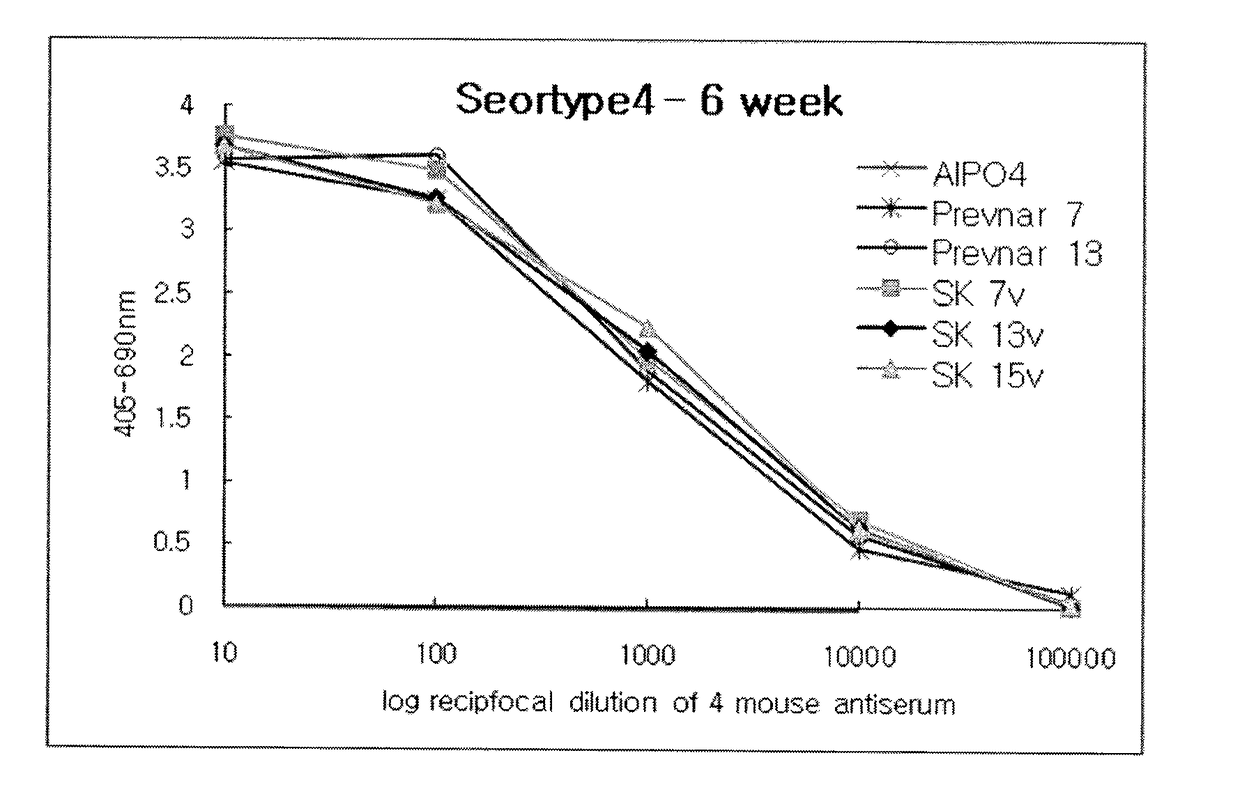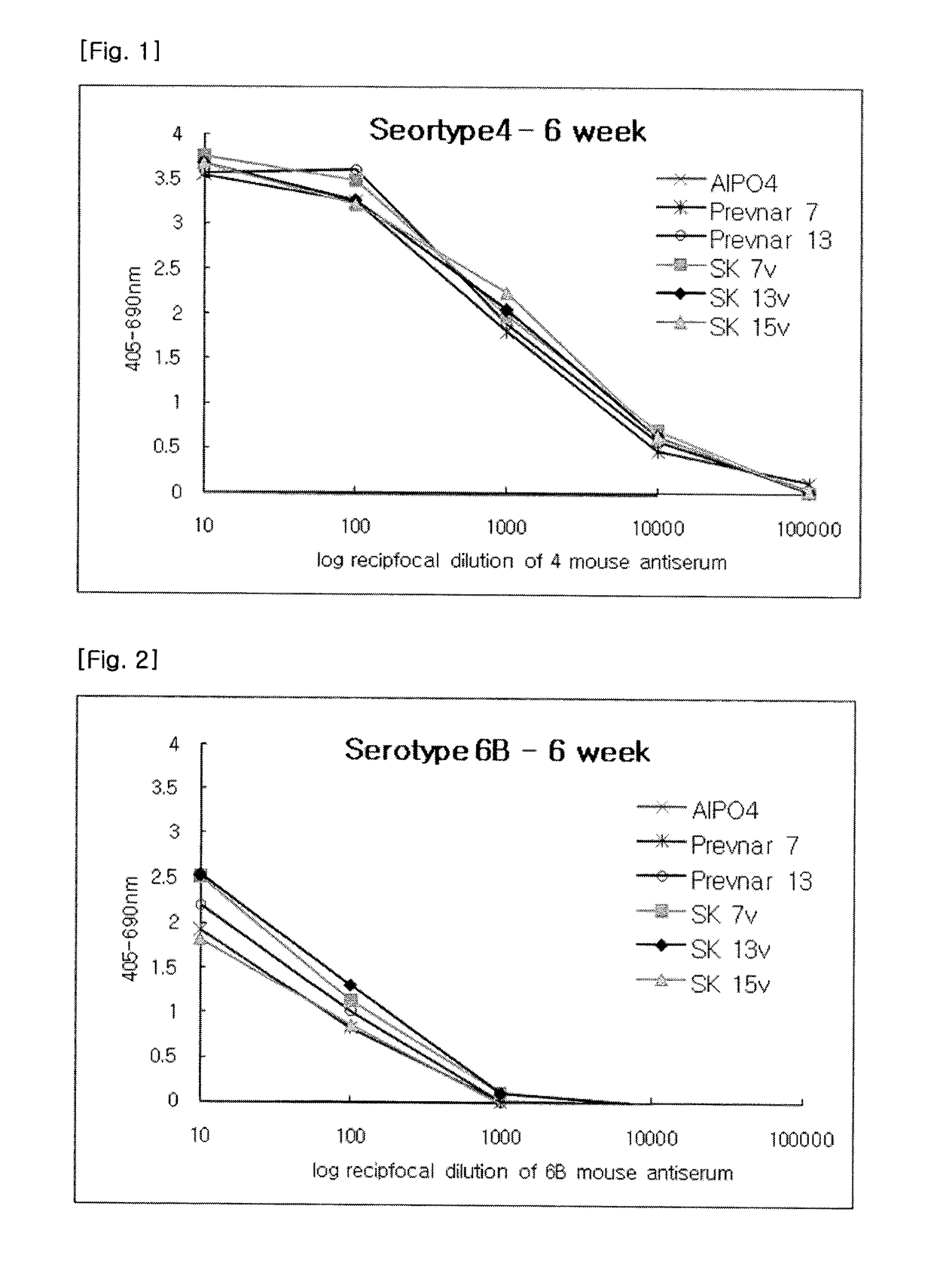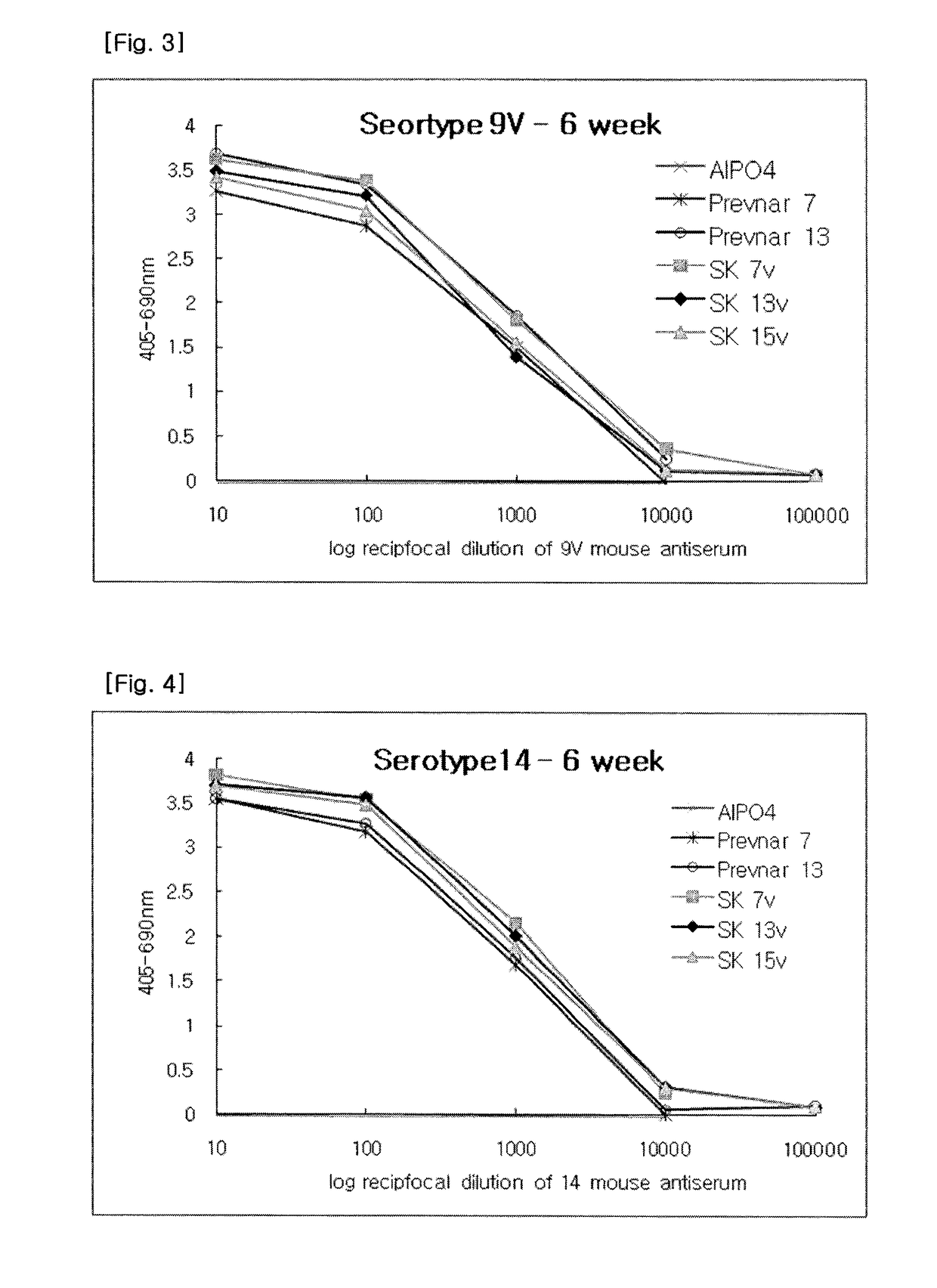Polyvalent Pneumococcal Polysaccharide-Protein Conjugate Composition
a polysaccharide and conjugate technology, applied in the field of multivalent immunogenic compositions, can solve the problems of limited serotype coverage and infants and young children's poor response to most pneumococcal polysaccharides, and achieve the effect of preventing pneumoccal disease, enhancing serum igg titer and functional antibody activity
- Summary
- Abstract
- Description
- Claims
- Application Information
AI Technical Summary
Benefits of technology
Problems solved by technology
Method used
Image
Examples
example 1
Preparation of S. pneumoniae Capsular Polysaccharide
[0044]Cultivation of S. pnemoniae and purification of capsular polysaccharides were conducted as known to one of ordinary skill in the art. S. pneumoniae serotypes were obtained from the American Type Culture Collection (ATCC). S. pneumoniae were characterized by capsules and immobility, Gram-positive lancet-shaped diplococcus and alpha hemolysis in a blood agar medium. Serotypes were identified by Quelling test using specific anti-sera (U.S. Pat. No. 5,847,112).
Preparation of Cell Banks
[0045]Several generations of seed stocks were created in order to expand the strain and remove components of animal origin (generations F1, F2, and F3). Two additional generations of seed stocks were produced. The first additional generation was made from an F3 vial, and the subsequent generation was made from a vial of the first additional generation. Seed vials were stored frozen (−70° C.) with synthetic glycerol as a cryopreservative. For cell ba...
example 2
Preparation of S. pneumoniae Capsular Polysaccharide-CRM197 Conjugate
[0051]Polysaccharides of different serotypes were activated following different pathways and then conjugated to CRM197. The activation process comprises reduction of the size of capsular polysaccharides to the target molecular weights, chemical activation and buffer exchange via ultrafiltration. Purified CRM197 is conjugated to activated capsular polysaccharides, and the conjugates are purified using ultrafiltration and finally filtered through 0.22 μm filter. The process parameters such as pH, temperature, concentration and time are as follows.
(1) Activation
Step 1
[0052]Each serotype polysaccharide was diluted with water for injection, sodium acetate and sodium phosphate to a final concentration in a range of 1.0 to 2.0 mg / mL. For serotype 1, sodium hydroxide (0.05 M final base concentration) was added and the solution was incubated at 50 □±2 □. Then, the solution was cooled to 21 to 25 □ and the hydrolysis was sto...
example 3
Formulation of a Multivalent Pneumococcal Conjugate Vaccine
[0064]The required volumes of final bulk concentrates were calculated based on the batch volume and the bulk saccharide concentrations. After the required amounts of the 0.85% sodium chloride (physiological saline), polysorbate 80 and succinate buffer were added to the pre-labeled formulation vessel, bulk concentrates were added. The preparation was then thoroughly mixed and sterile filtered through a 0.22 μm membrane. The formulated bulk was mixed gently during and following the addition of bulk aluminum phosphate. The pH was checked and adjusted if necessary. The formulated bulk product was stored at 2-8 □. The product contained, in a 0.5 ml volume, 2 μg of each saccharide, except for 6B at 4 μg; approximately 34 μg CRM197 carrier protein; 0.125 mg of elemental aluminum (0.5 mg aluminum phosphate) adjuvant; 4.25 mg of sodium chloride; 295 μg of sodium succinate buffer; and 100 μg of polysorbate 80.
PUM
| Property | Measurement | Unit |
|---|---|---|
| pH | aaaaa | aaaaa |
| buffering capacity | aaaaa | aaaaa |
| buffering capacity | aaaaa | aaaaa |
Abstract
Description
Claims
Application Information
 Login to View More
Login to View More - R&D
- Intellectual Property
- Life Sciences
- Materials
- Tech Scout
- Unparalleled Data Quality
- Higher Quality Content
- 60% Fewer Hallucinations
Browse by: Latest US Patents, China's latest patents, Technical Efficacy Thesaurus, Application Domain, Technology Topic, Popular Technical Reports.
© 2025 PatSnap. All rights reserved.Legal|Privacy policy|Modern Slavery Act Transparency Statement|Sitemap|About US| Contact US: help@patsnap.com



